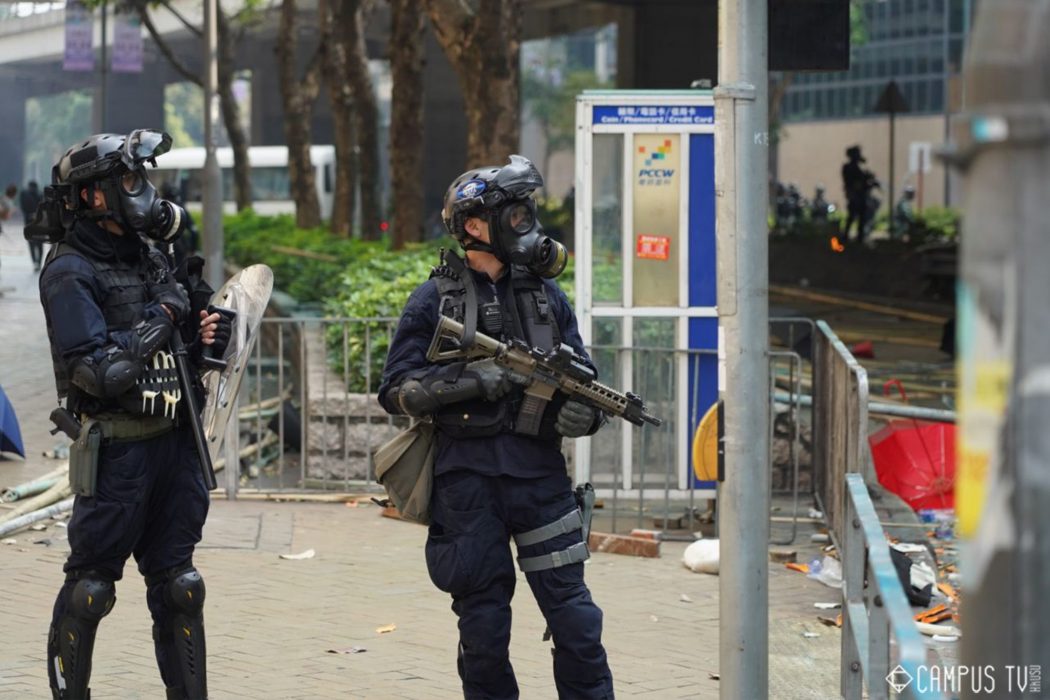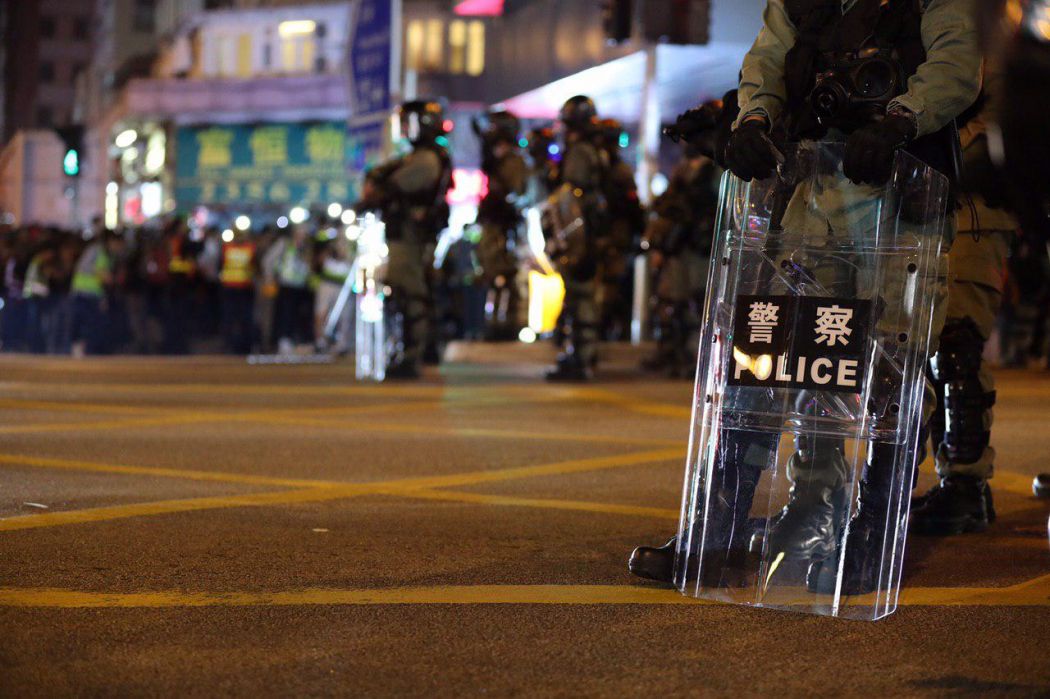The infamous AR15 is a regular sight at Hong Kong’s pro-democracy protests, appearing sporadically from last April, before being deployed en masse during the police siege of the Hong Kong Polytechnic University, and routinely ever since.
There is much misunderstanding about this rifle, and its use by the Hong Kong Police Force (HKPF). Largely this misunderstanding is rooted in the use of an intentionally similar-looking, less-lethal weapon system by the HKPF, the Pepperball VKS (Variable Kinetic System). These two weapons are totally different.

The AR15 and its many derivatives have been in service with the American military since the Vietnam war. The weapon has also found its way into the service of dozens of other militaries and police forces, either through legitimate means, such as the examples used by the HKPF, or illegitimately, such as the unlicensed copies manufactured by the People’s Republic of China and the Democratic People’s Republic of Korea.
Three varieties of AR15 are used by the HKPF. These are M16A1s sold to the HKPF as military surplus from the United States during the colonial period, M16A2s also sold as military surplus by the United States after the 1997 handover, and Sig 516’s purchased from Switzerland within the past five years.
The M16A1 and M16A2 used by the HKPF were not modified in any meaningful way after being imported from the US. To all extents and purposes, they are still military issue rifles as used in the Vietnam and Gulf Wars respectively. The notable exception to this is an optic that the HKPF mounts on all of its M16 rifles.

The SIG 516 is a high specification Swiss variant of the M4 rifle, itself a carbine model of the original AR15 rifle. It was first deployed to the protests by the HKPF last November. It is only issued to the Special Duties Unit of the HKPF, who themselves were only deployed to the protests from November.
All three of these rifles are military grade service rifles that fire the 5.56mm NATO cartridge and are both accurate and lethal for several hundred yards.
The Pepperball VKS is a less-lethal weapons system that fires paintball-like munitions typically loaded with offensive substances such as CS (tear gas) or OC (pepper spray). It is intentionally modelled to have the same appearance, feel, and fire control system as an AR15 rifle.

This replication of the AR15 style also serves as a fear-inducing tactic, as most civilians will be unable to distinguish between the VKS and a live firing AR15, especially during the stress of an attempted arrest.
The VKS was first documented in use by the HKPF last September and appears to have been purchased after the outbreak of the pro-democracy movement in the same year. This type can be best distinguished from a live firing AR15 by the very broad stock, which holds the weapons gas tank, or more easily by the bright colouring of certain elements of its furniture.

Typically this will consist of a yellow or orange stock, magazine, or barrel shroud, or a combination of all three. The HKPF never puts such colours on its live firing AR15 rifles, all of which are either black or gunmetal.
The VKS can also be equipped with a top-mounted, gravity-fed secondary hopper, which is a marked difference from live firing AR15 rifles, which the HKPF only issues with traditional 20 or 30 round box magazines.
